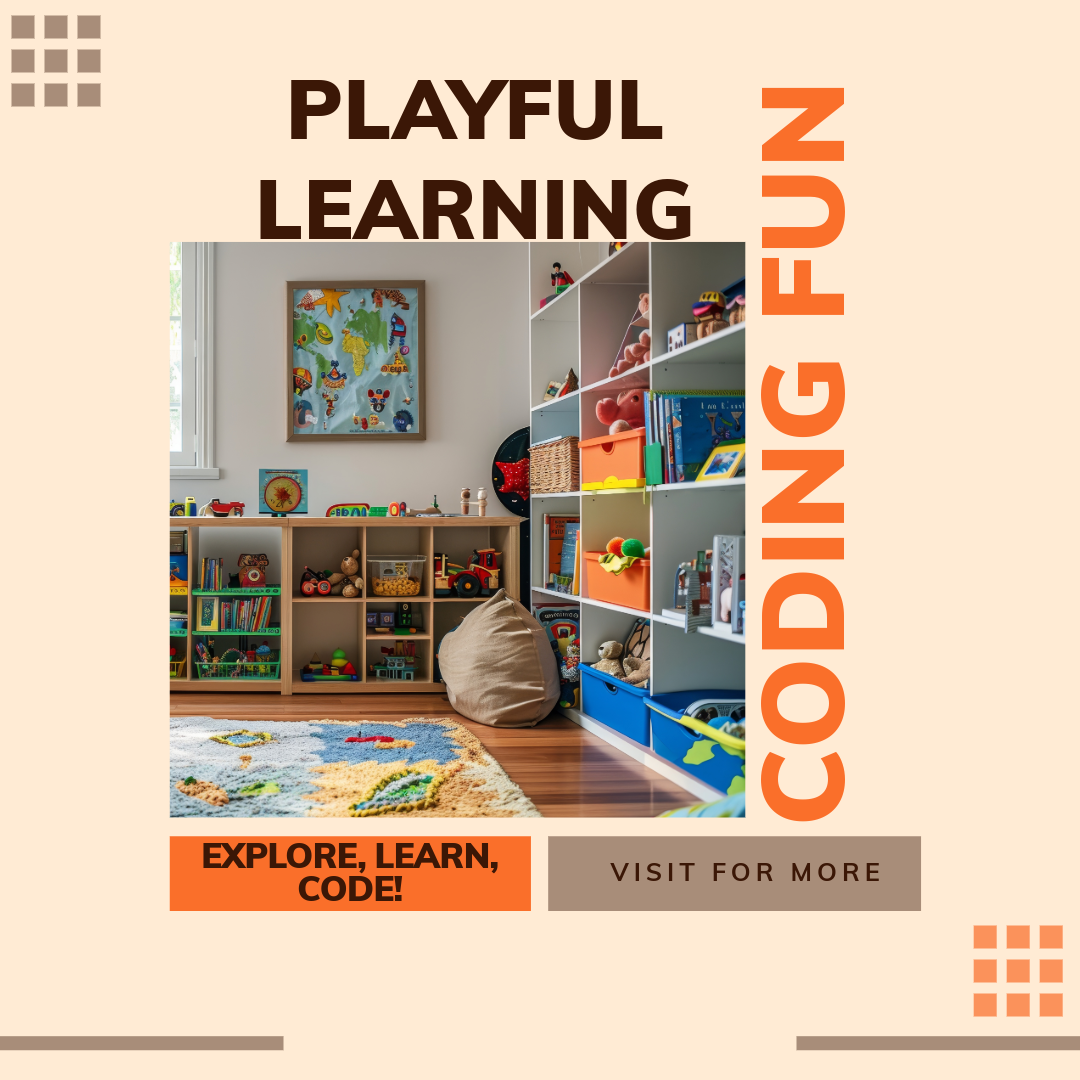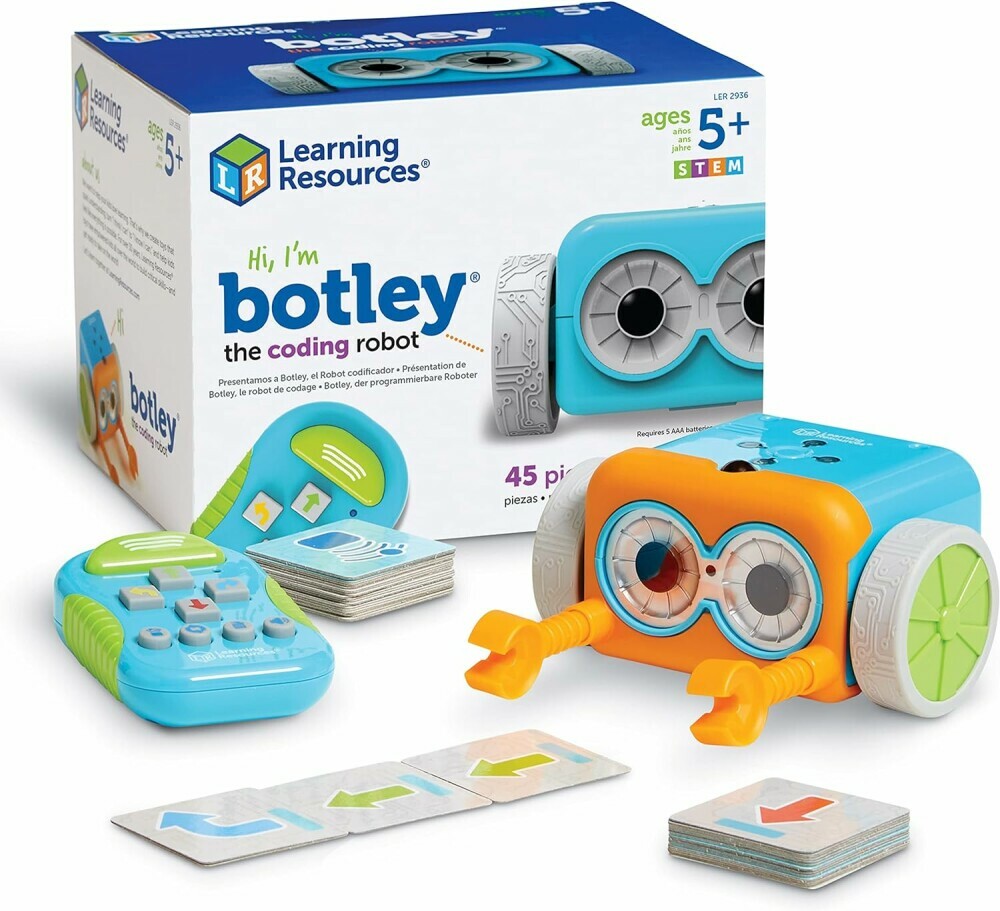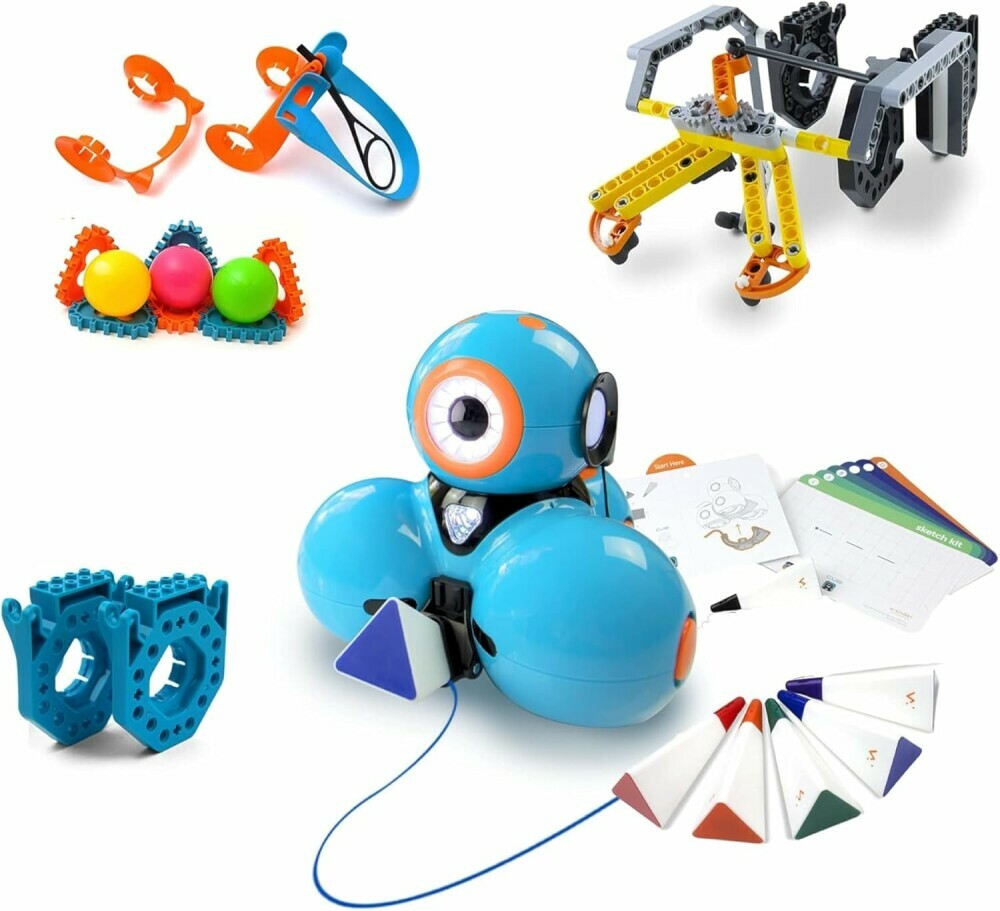Unlocking the World of Coding: An Adventure for Kids
In today’s digital age, coding has become an essential skill, much like learning to read and write. Emphasizing the importance of coding in children’s education helps to prepare them for a future dominated by technology, where problem-solving and critical thinking are vital. Understanding the fundamentals of coding fosters creativity as children learn to bring their ideas to life through programming. Coding toys serve as an excellent gateway, making the learning process engaging and accessible. These toys transform complex concepts into playful experiences, allowing kids to grasp programming logic without the heavy jargon. By incorporating fun mechanics, such as games or robotics, children can see the immediate impact of their coding efforts, sparking curiosity and motivation. Starting coding at a young age offers numerous benefits. It enhances cognitive development, encourages perseverance, and cultivates collaboration skills through group activities. Plus, early exposure builds confidence, paving the way for advanced learning in computer science and related fields. Ultimately, coding is more than just a skill; it’s an adventure that opens up a world of possibilities for the innovators of tomorrow.
How to Choose the Best Coding Toy for Your Child
Selecting the right coding toy for your child can be a rewarding yet challenging process. Start by considering age appropriateness; a toy that aligns with your child’s developmental stage will ensure they engage without feeling overwhelmed. Next, think about interest alignment. Does your child enjoy building, storytelling, or problem-solving? A toy that resonates with their interests will capture their attention and make learning more enjoyable. Educational value is crucial as well. Look for toys that not only teach coding concepts but also encourage critical thinking and creativity. Understanding how the toy reinforces these skills can guide your selection. Balancing entertainment and education is key. A coding toy should be fun and interactive, ensuring that children remain engaged while also absorbing essential programming concepts. A toy that strikes this balance will keep learning light-hearted and effective. Lastly, embrace the diversity in coding toys available today. From programmable robots that foster hands-on interaction to board games that teach coding logic in a collaborative way, there’s something for every learning style. Exploring a variety of options allows you to find the perfect fit for your child, making coding an exciting adventure for them.
The Top 5 Coding Robots for Junior Programmers
As the interest in coding grows among children, so does the variety of coding robots designed to teach programming fundamentals in a fun and engaging way. Here’s a look at five of the top coding robots on the market, along with detailed reviews, feature comparisons, and educational content.
- LEGO Boost
- Overview: A versatile building set that combines LEGO construction with coding.
- Features: Programmable using a free app, it includes various sensors and motors.
- Durability: LEGO components are known for their high durability.
- Educational Content: Teaches basic programming concepts through building and coding.
- User Testimonials: Parents appreciate the blend of building and coding.
- Expert Opinion: Highly recommended for its flexibility and educational value.
- Botley 2.0
– Overview: A screen-free coding robot that promotes hands-on learning.
– Features: Offers various activities, including obstacle courses and mazes.
– Durability: Well-constructed and robust, ideal for younger kids.
– Educational Content: Focuses on sequential thinking and problem-solving.
– User Testimonials: Parents love its accessibility for preschoolers.
– Expert Opinion: Praised for its simplicity and educational reach.
- Sphero Mini
– Overview: A small, spherical robot that can be controlled via a smartphone.
– Features: Includes a gyroscope, accelerometer, and programmable actions.
– Durability: Resilient design, made to withstand rough play.
– Educational Content: Offers coding through an app and encourages programming logic.
– User Testimonials: Kids enjoy the interactive gameplay.
– Expert Opinion: Recognized for its engaging interface and learning potential.
- Ozobot Bit
– Overview: A tiny robot that can follow lines on paper as part of its coding process.
– Features: Uses color codes for programming; can be controlled via an app.
– Durability: Compact and sturdy, ideal for classroom settings.
– Educational Content: Introduces coding basics, robotics, and logical thinking.
– User Testimonials: Students find it fun and engaging.
– Expert Opinion: Highly valued in educational environments for its ease of use.
- Dash and Dot
– Overview: A pair of robots designed for interactive learning.
– Features: Can be programmed for various tasks using a companion app.
– Durability: Well-built robots that can handle drops.
– Educational Content: Encourages creativity, teamwork, and coding skills.
– User Testimonials: Kids enjoy collaborative tasks using both robots.
– Expert Opinion: Praised for fostering teamwork and innovation.
Comparison of Features, Durability, and Educational Content
Each robot offers unique features tailored to different age groups and learning styles. Durability remains a strong point across the board, ensuring they withstand frequent use. The educational content varies, with some focusing on basic programming and others integrating robotics and logical thinking more deeply.
User Testimonials and Expert Opinions
Parents and educators alike have shared positive experiences with these coding robots, noting improvements in their children’s problem-solving skills and enthusiasm for technology. Experts in educational technology recommend these robots for their ability to engage young learners and lay a foundation for future coding knowledge.
For further reading and specific models, consider checking platforms like [Common Sense Education](https://www.commonsense.org/education/) or [Educational Insights](https://www.educationalinsights.com/) that offer comprehensive reviews and buying guides.
Board Games That Turn Algorithms into Playtime
Algorithms into Playtime: Introducing algorithms through play can be a fun and engaging way for children to learn foundational coding concepts. By creating simple sequential steps, kids can learn to think logically and solve problems creatively.
Exploring Board Games That Teach Coding Concepts: There are several board games designed specifically to teach coding principles, such as “Robot Turtles,” which introduces programming logic through a fun, competitive format. Another example is “Code Master,” which blends puzzles with programming logic, encouraging strategic thinking.
Analyzing the Cognitive Skills Enhanced by Each Game: Each of these games promotes various cognitive skills. For instance, “Robot Turtles” fosters critical thinking and decision-making by requiring players to plan moves ahead. Similarly, “Code Master” enhances problem-solving skills and spatial awareness, as players must visualize how to navigate obstacles.
Age Range Suitability and Replay Value: When considering age appropriateness, “Robot Turtles” is perfect for younger kids, like your 5-month-old’s future playtime, while “Code Master” appeals more to slightly older children, like your 8-year-old, who can grasp the challenge more fully. Additionally, games with varying levels of complexity can increase replay value, keeping them engaging as children grow and their understanding deepens.
Do you have a favorite board game or one you played with your kids?
Apps and Digital Platforms: Coding in the Virtual Playground

In today’s technologically advanced world, digital proficiency is no longer optional but essential. This necessity has led to a surge in apps and digital platforms designed specifically for teaching coding to children. This virtual playground is an innovative ecosystem where young minds can develop their programming skills in a fun, interactive, and stimulating environment. The variety of apps available caters to different age groups, learning styles, and skill levels, ensuring that every child can find a platform that resonates with them.
Introduction to Coding Apps Designed for Children
The landscape of educational technology has evolved tremendously, and coding apps designed for children are at the forefront of this evolution. These apps provide an intuitive introduction to coding languages and concepts, breaking them down into manageable and understandable segments. They often employ visual programming languages like Scratch, Blockly, or Tynker, which use drag-and-drop code blocks to teach fundamental programming logic without overwhelming beginners with syntax. This method allows children to focus on understanding the logic and structure of coding before moving on to more complex text-based languages like Python or JavaScript.
Additionally, these apps often incorporate story elements or missions, turning the learning process into an adventure. A young coder might find themselves helping a character solve puzzles, navigate mazes, or even create their own games. This narrative approach helps to maintain engagement and makes the abstract concepts of coding tangible and relatable.
The Role of Parents in Supporting Coding Education
As a father of two daughters, I’ve come to understand the vital role parents play in supporting their children’s education, particularly when it comes to coding. Our involvement is crucial in fostering an environment that encourages curiosity, creativity, and continuous learning. By showing interest and actively participating in their coding journeys, we can help our children develop a strong foundation in technological literacy, which is becoming increasingly important in the modern world. Our support not only boosts their confidence but also reinforces the importance of perseverance and problem-solving skills.
Tips for Parents to Get Involved with Their Children’s Coding Journey
Getting involved in my daughters’ coding education has been an enlightening and rewarding experience. Here are some tips that have worked for our family:
1. Explore Together: We started by exploring various coding apps and platforms together. This made the initial experience less intimidating for my daughters and more of a fun family activity. We chose apps that were age-appropriate and aligned with their interests.
2. Set Shared Goals: Setting small, achievable goals helped us stay motivated. For example, we aimed to complete a certain number of coding puzzles each week or to create a simple game by the end of the month. Celebrating these milestones together was immensely satisfying.
3. Create a Routine: Consistency is key, so we established a regular time for coding activities.
Building a Future with Code: Long-Term Benefits of Coding Toys
Investing in coding toys for my daughters has been one of the most rewarding decisions as a parent. These interactive tools transform abstract coding concepts into tangible, fun activities, keeping my daughters engaged and motivated. Beyond the immediate enjoyment, coding toys offer substantial long-term benefits. They nurture a foundational understanding of technology, which is pivotal in an increasingly digital world. These early experiences will likely make their transition into advanced tech education much smoother and more intuitive.
Connecting the Dots Between Coding Toys and Future Career Opportunities
Using coding toys bridges the gap between playful learning and real-world applications. It’s not just about immediate gratification – these toys are providing my daughters with skills that are directly transferrable to future career opportunities. In fields ranging from computer science and engineering to digital marketing and creative industries, coding is an invaluable skill. By engaging with coding toys now, they’re not only learning how to code but also cultivating a mindset that embraces technology. This early exposure could potentially steer them towards careers in tech, where problem-solving and coding are integral.
Development of Problem-Solving Skills and Creativity Through Coding
One of the most fascinating aspects of coding is how it enhances problem-solving skills and creativity. I’ve noticed that as my daughters play with their coding toys, they’re learning to think critically and systematically. Coding challenges them to break down problems into smaller, more manageable tasks, which cultivates logical thinking and resilience. When their code doesn’t work as expected, they learn to troubleshoot and debug – skills that are incredibly valuable across various aspects of life.
Moreover, coding fosters creativity. Contrary to the common perception of coding as purely technical, it’s actually a highly creative process. My daughters have used coding to create their own games, animations, and stories. These projects require them to envision an end goal and figure out how to achieve it using code. This blend of creativity and logic is a powerful combination that prepares them for almost any future endeavor, whether technical or non-technical.
Coding as a Universal Language in a Technologically Driven World
In today’s digitally interconnected world, coding has emerged as a universal language. Understanding and speaking this language is becoming as critical as literacy in reading and writing. I’ve realized that by learning to code, my daughters are not only gaining technical skills but are also joining a global community of problem-solvers and innovators.
Coding transcends borders and connects people across the globe. It’s a skill that’s equally valuable in Silicon Valley as it is in other tech hubs around the world. By learning to code, my daughters are preparing themselves to collaborate and communicate with peers from diverse backgrounds, fostering a deep understanding of global perspectives. This exposure not only equips them with the skills needed to thrive in the tech industry but also instills a sense of global citizenship, making them more adaptable and open-minded in a rapidly evolving world.
The Impact of Parental Encouragement on Learning Outcomes
It’s become clear to me that parental encouragement plays a significant role in my daughters’ learning outcomes. When I show excitement and interest in their coding projects, it validates their efforts and inspires them to push further. Positive reinforcement from parents can lead to increased motivation, better performance, and a deeper commitment to learning. By being actively involved and providing a supportive environment, I’m helping to build their self-esteem and making learning a positive experience.
Resources for Parents to Learn Alongside Their Children
Supporting my daughters’ coding journey has also been an enlightening experience for me. There is a wealth of resources available for parents who want to learn alongside their children, making the experience collaborative and mutually beneficial. Online platforms like Code.org, Scratch, and Khan Academy offer courses specifically designed for beginners. These resources are often free and provide a structured learning path for both parents and children. Additionally, many coding toys come with comprehensive guides and tutorials that demystify coding concepts for both adults and kids. By engaging with these resources, I’ve been able to better understand the challenges my daughters face and offer more effective guidance. This shared learning journey not only strengthens our bond but also models a lifelong love of learning and curiosity.
Encouraging Gender Diversity in STEM
When my daughters see themselves successfully solving problems and creating projects with their coding toys, it builds their confidence and hones their interest in STEM. This exposure also breaks down societal stereotypes and demonstrates that technology and engineering are inclusive fields where women can not only participate but excel.
Conclusion
Investing in coding toys for my daughters has turned out to be one of the best decisions I’ve made as a parent. These toys are more than just playthings; they are tools that foster critical thinking, creativity, and problem-solving skills, while also offering a fun and engaging way to learn coding. By encouraging my daughters to learn to code, I am preparing them for a future where digital literacy is paramount, and I am supporting their journey toward becoming confident, innovative, and globally-minded individuals.
In nurturing their coding skills, I’ve come to appreciate the broader implications of such learning: bridging the gender gap in STEM, fostering a lifelong love for learning, and preparing the next generation to succeed in an increasingly digital world. For any parent contemplating whether to introduce their children to coding, I can wholeheartedly say that the benefits are profound and far-reaching.








Unlike ever before, the children of this generation are going to have to need to know how to code. In fact, I am surprised they haven’t added it as a compulsory school subject yet. The earlier you start the easier time you are going to have learning to grasp it.
Nothing better than offering coding in toy form, as this makes it even more enjoyable for children to learn this skill. I wish I could have learned some coding when I was younger, as it would certainly make certain online activities easier.
STEM toys truly make learning to code an engaging adventure for kids. By incorporating fun and interactive elements, these toys transform complex concepts into digestible experiences, sparking curiosity and creativity at an early age. It’s fascinating how play can fuel such essential skills!
The idea of coding as a compulsory subject makes perfect sense in today’s tech-driven world; the earlier children get comfy with coding, the more equipped they will be for the future.
What kinds of coding toys have you come across that excite you the most?
Your article provides a compelling case for the inclusion of coding in early education. By presenting coding as an engaging and essential skill, facilitated by innovative toys, the article highlights the transformative potential of coding education for the innovators of tomorrow.
it highlights the crucial role coding plays in today’s technology-driven world. The article underscores the importance of integrating coding into early education by drawing parallels between coding and fundamental skills like reading and writing.
the article effectively argues that coding is not just a technical skill but a creative and cognitive development tool. The use of coding toys as educational tools is particularly insightful. These toys simplify complex programming concepts into fun, interactive experiences, making it easier for children to learn and enjoy coding. This approach demystifies programming and makes it accessible to younger audiences who might otherwise find it intimidating.
Moreover, the benefits of early coding education extend beyond just learning to code. As Zwack mentions, it fosters critical thinking, problem-solving, and creativity. Coding activities often require perseverance and collaboration, teaching children valuable life skills. Additionally, starting young helps build confidence, setting a strong foundation for advanced studies in computer science and related fields.
The emphasis on coding as an adventure that opens up a world of possibilities is particularly inspiring. It positions coding not just as a future career skill but as a gateway to innovation and creativity. This perspective encourages children to view coding as an exciting journey rather than a daunting task.
Thank you for your wonderfully enthusiastic comment! I’m thrilled to hear you found the article compelling—if only I could get a gold star for “Most Engaging Article on Coding” to hang on my wall! 🌟
You’ve perfectly captured the essence of coding in early education. It’s like giving children a magic wand to create their own digital worlds—who wouldn’t want to be a wizard of coding? By presenting programming through fun, interactive toys, we’re turning what could be a serious and intimidating subject into an exciting playground of possibilities. It’s coding on a seesaw, if you will!
Plus, the benefits of early coding education are like bonus rounds in a video game: critical thinking, problem-solving, creativity—the list goes on! It’s like fitting children with superhero capes that help them tackle challenges instead of just sitting around waiting for the pizza delivery guy. 🍕
By framing coding as a thrilling adventure, we’re inspiring the next generation to see it as an exciting quest rather than a daunting task. After all, who wouldn’t want to embark on a journey where you can build robots, create apps, and possibly become the next tech mogul—all while having a blast?
So here’s to coding—may it inspire future innovators, problem solvers, and the occasional superhero! 🦸♂️💻